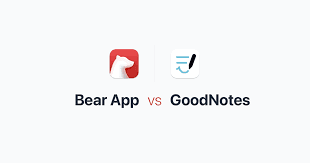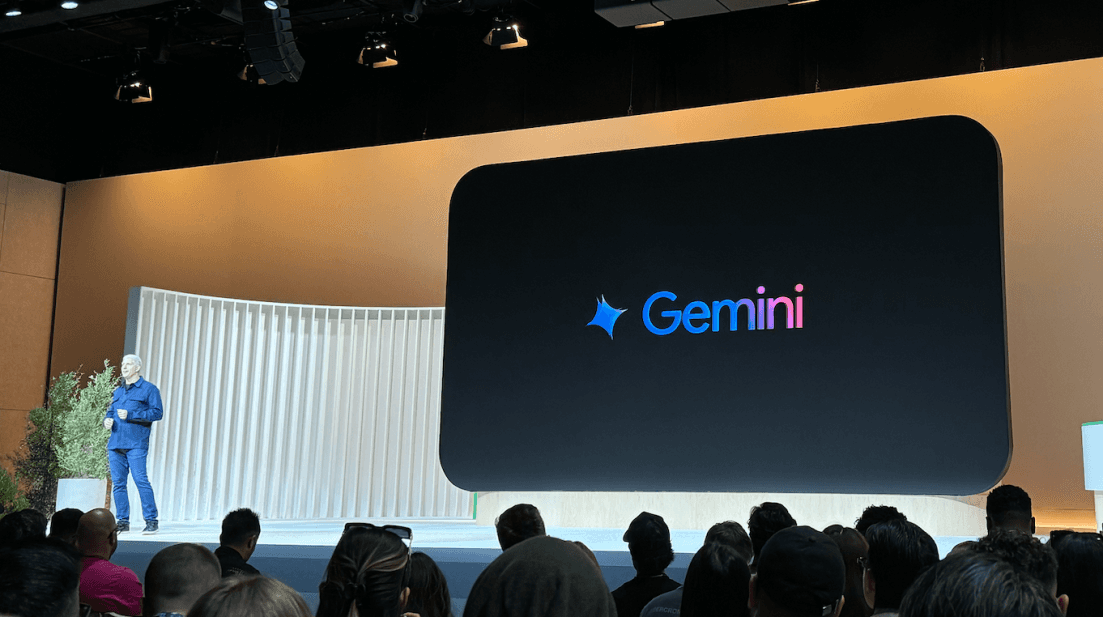Timon Harz
December 12, 2024
Rhymes AI Unveils Allegro-TI2V: A Breakthrough in Visual Storytelling with Open-Source AI Video Generation Technology
Allegro-TI2V by Rhymes AI is transforming video generation with AI-powered tools for creators. Discover how this breakthrough technology is reshaping the future of storytelling and content production.

Rhymes AI has open-sourced Allegro-TI2V, a groundbreaking text-to-image-to-video generation model that is set to transform the way visual content is created. This release represents a significant advancement in the fast-paced field of generative AI technologies. Allegro-TI2V is a refined version of the original Allegro model, offering unmatched capabilities in turning textual descriptions and images into vibrant, high-quality videos. With its exceptional versatility and technical prowess, the model is an invaluable tool for content creators and researchers seeking to enhance visual storytelling.
Allegro-TI2V stands out with its impressive technical features that elevate it above other video generation models:
A context length of 79.2K, equivalent to 88 frames
High-resolution output at 720×1280 pixels
Video generation at 15 frames per second, with optional interpolation to 30 FPS
Support for multiple precision modes (FP32, BF16, FP16)
Efficient GPU memory usage of just 9.3 GB in BF16 mode
With its compact yet powerful design, Allegro-TI2V integrates a 175 million-parameter VideoVAE and a 2.8 billion-variant VideoDiT model. This advanced architecture enables the creation of intricate, nuanced videos that perfectly capture the essence of user-provided prompts and images.

Allegro-TI2V introduces two revolutionary generation modes that push the boundaries of AI-powered video creation:
Subsequent Video Generation: Users can generate follow-up video content by providing a text prompt along with an initial frame image, allowing for a seamless continuation of visual narratives.
Intermediate Video Generation: By supplying the first and last frame images, users can generate intermediate video content, enabling more sophisticated and controlled video creation.
Rhymes AI has released Allegro-TI2V under the Apache 2.0 License, making it open-source and accessible to researchers, developers, and content creators. This approach invites users to explore, study, and build upon the model's groundbreaking technology. Comprehensive documentation and resources are provided to help users quickly integrate the model into their projects. Key requirements include Python 3.10 or higher, PyTorch 2.4 or newer, and CUDA 12.4 or later. A user-friendly command-line interface allows for easy video generation with minimal setup, making the model accessible to both technical and non-technical users.

The potential applications of Allegro-TI2V are vast and promising. Content creators, filmmakers, game developers, and digital artists can use the model to quickly prototype visual concepts, generate dynamic background sequences, develop innovative storytelling tools, create unique visual effects, and explore new avenues of AI-assisted creative expression. The model can produce 6-second videos in about 20 minutes on a single H100 GPU, and this time is reduced to just 3 minutes with an 8xH100 configuration. The optional CPU offloading feature further improves accessibility by lowering GPU memory requirements.
In summary, Allegro-TI2V highlights the immense potential of machine learning in the creative world. With its open-source availability, advanced technical capabilities, and user-friendly design, it marks a significant milestone that will inspire and empower new forms of digital creativity. Developers and creators can access the model weights and documentation on the Hugging Face platform and the Allegro GitHub repository.
Overview of Rhymes AI and Allegro-TI2V Technology
Rhymes AI has introduced its latest innovation, the Allegro-TI2V, which promises to revolutionize the field of visual storytelling by combining AI-powered video generation with open-source accessibility. Allegro-TI2V allows creators to generate high-quality videos directly from text prompts and images, significantly simplifying the video production process. By offering capabilities such as generating dynamic video content from a first frame and user-provided prompts, it enables users to create videos with a new level of flexibility and efficiency.
This breakthrough technology is poised to impact various industries, including content creation, game development, education, and digital art. Its ability to create engaging explainer videos, cutscenes, and even immersive VR experiences can transform how stories are told across different media. With open-source availability under the Apache 2.0 license, Allegro-TI2V democratizes access to this cutting-edge technology, making it available to a wider audience without the high costs typically associated with proprietary AI models.
What is Allegro-TI2V?
Allegro-TI2V by Rhymes AI is a groundbreaking open-source AI technology designed to revolutionize video generation by seamlessly converting text and image inputs into high-quality video content. This model stands out for its unique ability to handle multiple video creation modes, including *Subsequent Video Generation*, which generates continuous video based on initial frames and prompts, and *Intermediate Video Generation*, which crafts intermediate frames between two existing video points. This innovation offers a more flexible, efficient way for creators to produce high-quality video content.
The technology features a sophisticated architecture that combines two major models: VideoVAE with 175 million parameters and VideoDiT with 2.8 billion parameters. These models are capable of producing videos with a resolution of 720×1280 pixels at 15 frames per second, which can be interpolated to 30 FPS for smoother outputs. Notably, the Allegro-TI2V supports multiple precision modes to optimize performance, enabling video creation with minimal hardware requirements (as low as 9.3GB of GPU memory in BF16 mode).
This model is available under an Apache 2.0 license, making it accessible to a wide range of users including researchers, developers, and content creators. Allegro-TI2V is poised to unlock new creative possibilities in fields like film production, gaming, digital art, and creative prototyping.
Technology Breakdown: How Allegro-TI2V Revolutionizes Video Creation
The Allegro-TI2V model from Rhymes.AI introduces a cutting-edge approach to video generation that sets it apart from traditional video creation methods. While traditional video production requires extensive human input, such as filming and editing, Allegro-TI2V leverages AI to create high-quality videos directly from user prompts and images.
At the core of this process is the ability to generate video sequences from a combination of text descriptions and initial images. The model supports two main modes: generating videos from a single frame and prompt, and creating dynamic video sequences from both the first and last frames. This is a significant leap from traditional methods, which typically rely on real-time footage and complex editing tools to manipulate scenes.
The model's architecture consists of two key components: a 175M parameter VideoVAE (Variational Autoencoder) for compact encoding and a 2.8B parameter VideoDiT (Diffusion Transformer) for generating detailed, high-fidelity content. This enables it to create 6-second videos at 720x1280 resolution, with a frame rate of 15 FPS, which can be further interpolated to 30 FPS for smoother playback. Compared to traditional video production, where each second of footage can take hours or even days to produce, Allegro-TI2V allows content creators to quickly generate visually rich videos with minimal input.
One of the most impressive aspects of this technology is its compact efficiency. The model requires just 9.3GB of GPU memory for processing in BF16 mode, which is far less than traditional video editing software, making it an accessible tool for a wider range of users. For video content creators, visual effects artists, and even researchers, this means faster turnaround times and more creative flexibility, without the need for expensive, high-powered hardware.
For those interested in diving deeper into the technical side, the model is open-source, allowing developers to explore its inner workings and adapt it for their own purposes. Additionally, Rhymes.AI provides a straightforward setup guide for users looking to integrate Allegro-TI2V into their own projects.
Key Features and Benefits
The open-source nature of Allegro-TI2V plays a significant role in empowering creators and developers by offering them full access to both the model weights and the code, which is licensed under the Apache 2.0 license. This transparency allows developers to modify and adapt the technology for their unique needs. They can contribute to the ongoing development of the model or create derivative works based on the open-source resources provided. With these tools, developers can experiment with various aspects of video generation, from customizing output quality to optimizing the model for specific use cases.
Moreover, this open-source approach fosters community-driven innovation, where users can share their modifications and improvements, helping to accelerate the evolution of the technology. For example, Rhymes.AI provides not only the model weights but also detailed documentation and GitHub repositories for those interested in exploring or deploying the technology. This encourages a collaborative environment where contributions can shape the future of video generation, making advanced tools accessible to a broader audience.
By making Allegro-TI2V open-source, Rhymes.AI is effectively lowering the barrier to entry for those interested in experimenting with AI-driven video creation, and it provides a platform for further exploration of new possibilities in creative media production.
Breakthroughs in Video Generation
Rhymes AI's Allegro-TI2V is setting a new standard in video generation by offering high-quality visual content creation with enhanced flexibility and efficiency. One of the standout features is its ability to generate 6-second video clips from simple text descriptions, producing outputs at a resolution of 720p and a frame rate of 15 FPS. These videos can be further enhanced to 30 FPS using interpolation for smoother playback, making it an ideal tool for creators seeking dynamic, lifelike visuals.
The model is designed with efficiency in mind, using a compact architecture that runs on GPUs with as little as 9.3GB of memory in BF16 mode. This makes it accessible even for users with mid-range hardware, while still maintaining exceptional performance. Moreover, the open-source nature of Allegro-TI2V means that creators and researchers can explore and contribute to the development of video generation technology.
Allegro-TI2V is also equipped with a versatile content creation capability. It can generate a wide range of scenes, from natural landscapes to complex human or animal interactions. Its text-to-video conversion, coupled with the option to fine-tune video outputs using multiple precision modes (FP32, TF32, BF16, FP16), provides users with the flexibility to balance quality and processing time based on their needs.
These breakthroughs make Allegro-TI2V a powerful tool not only for content creation but also for marketing, storytelling, and research in AI-driven video generation.
The Allegro-TI2V from Rhymes AI holds significant promise for revolutionizing storytelling across a variety of fields. Its innovative ability to generate high-quality videos from text and images offers powerful applications in filmmaking, marketing, education, and beyond.
In filmmaking, Allegro-TI2V provides an efficient way for directors and digital artists to rapidly create visual content, even for complex narrative sequences, without the need for extensive animation work. This could drastically reduce production time and costs, allowing for more creative experimentation and faster prototyping of visual concepts. It could particularly benefit independent filmmakers and content creators, providing them with a tool for quickly bringing ideas to life without extensive resources.
For marketing, Allegro-TI2V enables the creation of dynamic ad content that grabs attention by transforming static assets (like images and copy) into engaging video formats. This could be particularly impactful in social media marketing, where video content often outperforms static posts. The ability to generate videos on-demand also allows for highly customized, contextually relevant advertising that aligns with current trends and target demographics.
In education, this technology could be used to produce educational videos that are both informative and visually engaging, making learning more interactive and accessible. Teachers and content creators could generate custom animations and visual explanations that simplify complex concepts, enhancing student understanding and retention.
The open-source nature of Allegro-TI2V encourages widespread adoption, providing researchers, developers, and creators with the flexibility to innovate and integrate it into their own workflows. By allowing users to generate follow-up or intermediate video content based on an initial frame, it unlocks new creative possibilities for dynamic storytelling.
Real-World Applications
Allegro-TI2V is set to revolutionize the creative industries, particularly for filmmakers, content creators, and visual artists, by making AI-driven video production more accessible and efficient. This open-source video generation technology can transform text prompts and initial images into high-quality video sequences, offering new ways to conceptualize and bring stories to life.
For filmmakers, Allegro-TI2V opens doors to rapid prototyping and dynamic scene generation. The model supports generating entire video narratives from brief text descriptions, which can be especially useful during the pre-production phase, where visualizing scenes quickly can enhance the planning process. Additionally, its ability to continue video sequences from a single frame allows for seamless storytelling continuity, a feature that can be utilized to produce consistent, high-quality visuals in a fraction of the time typically required.
Content creators in digital media can harness the power of Allegro-TI2V to create dynamic video content that was once only achievable through high-budget studios. Whether producing short-form content for platforms like YouTube and TikTok or more intricate animations for advertisements and social campaigns, the tool's ease of use and speed provide an invaluable asset in the fast-paced world of online media production. With its ability to interpolate video frames for smoother motion, creators can also ensure that the final product looks polished, even with a relatively low frame rate.
Moreover, game developers and visual effects artists can leverage Allegro-TI2V to generate complex animations and background sequences, cutting down on the manual effort required for detailed scene creation. The high-quality output and flexible generation modes allow for a wide range of creative expression, from simple animated sequences to more immersive, narrative-driven visuals.
Allegro-TI2V's combination of efficiency, accessibility, and creative potential empowers a wide range of professionals to experiment with new forms of video storytelling and media production.
Allegro-TI2V presents significant business and marketing opportunities, especially in fields that rely heavily on visual content creation. Its open-source, AI-driven video generation technology allows businesses to quickly produce high-quality video content from text and images. This has practical implications for marketing, where companies can craft engaging advertisements, brand campaigns, or social media content more efficiently than traditional video production methods.
For example, brands can use Allegro-TI2V to create compelling promotional videos tailored to specific messages or products. By leveraging text-to-video capabilities, marketers can generate dynamic and unique content based on product features, customer stories, or even abstract concepts. Additionally, the model's ability to smoothly interpolate videos (improving frame rates and video quality) ensures the output maintains a polished, professional feel, making it ideal for business presentations or client-facing content.
The model’s versatility in producing animated sequences based on textual prompts can also support businesses in sectors like education, entertainment, and e-commerce. Imagine an online store generating personalized product demos or educational platforms creating tutorial videos—all powered by AI.
These capabilities make Allegro-TI2V a powerful tool in modern digital marketing, where speed and creativity are crucial. The technology allows for the rapid deployment of high-quality content, which could lead to cost savings in production and more engaging experiences for audiences.
Allegro-TI2V’s capabilities in AI-driven video generation can have a significant impact on educational and training content creation. By enabling users to generate high-quality video clips from simple text descriptions, it can facilitate the creation of dynamic educational materials that are immersive and engaging.
For educators, the tool could be used to produce instructional videos that are visually rich and tailored to various learning styles. For example, subjects like history, biology, and physics could benefit from having complex concepts depicted visually, enhancing students' understanding and retention of material. The ability to generate visual content quickly and in different styles allows for a diverse range of educational scenarios—from animated visualizations of scientific phenomena to interactive storytelling for language learning.
In a training environment, Allegro-TI2V could be leveraged to create simulation-based learning content. For instance, it could generate video tutorials that walk employees through new software, step-by-step guides, or even virtual walkthroughs for machine operation. Its open-source nature also allows developers to adapt and enhance the technology, ensuring it remains customizable and scalable for various training needs.
Overall, Allegro-TI2V's potential to transform how educational and training materials are created, through fast and cost-effective video generation, presents an exciting frontier in digital learning and development.
How Allegro-TI2V Compares to Other AI Video Tools
Allegro-TI2V distinguishes itself from other AI video generation models by leveraging its open-source nature, which allows for complete transparency and customization. While other advanced AI video models like Text2Video-Zero and Stable Video Diffusion (SVD) also provide robust video generation capabilities, Allegro-TI2V offers a few distinct advantages that set it apart.
First, its open-source accessibility, under the Apache 2.0 license, provides users with the ability to not only access the model weights but also to modify and integrate the technology into their own projects. This is a significant advantage for developers looking for flexibility and control over the AI system's operation, especially when compared to closed-source models that might limit customization options.
Furthermore, Allegro-TI2V excels in scalability, as it uses a relatively efficient architecture with a manageable 9.3 GB GPU memory requirement in BF16 mode, allowing it to work well on both high-end and more moderately equipped machines. This scalability contrasts with other models like SVD, which, while high-quality, may demand more powerful hardware for optimal performance.
Another key feature is Allegro-TI2V’s versatile content generation, which supports both text-to-video and image-to-video transformation. Users can input prompts and images to guide the generation of videos, enabling it to create dynamic and detailed video sequences from textual descriptions and visual cues. While other models, such as Easy Animate, specialize in turning static images into animations, Allegro-TI2V's broader scope—ranging from dynamic scenes to human figures—makes it suitable for a wider variety of video production needs.
In terms of quality, Allegro-TI2V offers high-resolution outputs (720x1280 at 15 FPS) with options for interpolation to 30 FPS for smoother video. This is on par with or superior to some of the latest open-source models, offering high-quality content generation without compromising on accessibility.
In summary, Allegro-TI2V's open-source nature, combined with its versatile content creation capabilities and efficient use of hardware resources, makes it a compelling choice for developers and content creators looking for customizable, scalable AI video generation technology.
Community and Open-Source Contributions
Rhymes AI’s Allegro-TI2V introduces an exciting opportunity for developers and contributors to collaborate in the field of visual storytelling. This open-source model empowers the community to explore, innovate, and improve the underlying technology for text-to-video generation. By offering full model weights and code under the Apache 2.0 license, Allegro-TI2V invites developers to engage directly with the technology and contribute enhancements, fixes, or new features to the project.
For developers interested in joining this movement, the community discussion page on Hugging Face provides an active space for collaboration, where ideas, pull requests, and issues are discussed and resolved collectively. The GitHub repository serves as a central hub for accessing the source code and detailed instructions on setup, making it easy for anyone with a background in machine learning and video generation to get started.
This open-source model not only benefits individual developers but also accelerates innovation by allowing the wider community to refine and optimize the technology. Whether you're interested in improving video resolution, expanding the types of generated content, or integrating new AI tools, Allegro-TI2V’s collaborative environment ensures that the future of AI-driven video creation is shaped by a diverse set of contributions.
User feedback plays a crucial role in the development of Allegro-TI2V, and Rhymes AI is committed to fostering community-driven progress. Since the technology is open-source, it allows users to freely access the model's weights and code, providing a platform for continuous feedback and collaborative improvement. As users explore Allegro-TI2V's capabilities for a wide range of applications—such as content creation, game development, and education—they have the opportunity to contribute suggestions, report issues, and share creative uses that could inspire future updates. This feedback is integral to enhancing functionality, refining user experience, and expanding features.
Looking ahead, Rhymes AI is already planning several feature expansions, including more advanced video generation capabilities, such as motion control and longer video outputs. These improvements are expected to be driven by the very community that is actively engaged with the technology.
How to Get Started with Allegro-TI2V
To get started with Allegro-TI2V (Allegro's text-to-video generation model), follow these steps for installation and setup:
Download the GitHub Repository: You can start by downloading the Allegro-TI2V GitHub code. This contains all the necessary scripts and files for running the model.
Install Dependencies:
Ensure you are using Python 3.10 or higher, and that you have PyTorch 2.4 or later, along with CUDA 12.4or higher. You can install dependencies using the
requirements.txtfile provided in the repository.It is recommended to use Anaconda to create a new Python environment to avoid dependency issues. Install the required dependencies within this environment using:
Download Model Weights: The model weights for Allegro can be downloaded from Hugging Face, which is linked in the repository. You'll need the VAE, DiT, and other model components for inference.
Run Inference:
After everything is set up, you can run the model to generate videos based on your text prompts. Use the following command structure:
You can also use
--enable_cpu_offloadto reduce GPU memory usage by offloading parts of the model to the CPU, although this will slow down the inference process.
Additional Options:
You may want to use tools like EMA-VFI for interpolating the generated videos to 30 FPS for smoother playback.
Be mindful that running the model may require significant GPU resources, and on lower-end GPUs, the process could take several hours to complete.
For further information, including advanced setup options and troubleshooting, refer to the detailed instructions on the Allegro-TI2V GitHub page.
Allegro-TI2V offers comprehensive tutorials and documentation designed to help users effectively utilize the tool. The official GitHub repository provides installation guides, sample commands, and troubleshooting resources to assist in getting started. Users can easily download the necessary model weights and follow detailed instructions for video generation, which include running simple commands to generate videos from user prompts and images.
For beginners, Allegro-TI2V’s intuitive interface and documentation make the learning process smoother. The installation guide outlines system requirements like Python 3.10 or higher, PyTorch 2.4 or newer, and CUDA 12.4 or later. Additionally, for those looking to dive deeper, the model's extensive capabilities are explained, from basic video creation to advanced features like generating intermediate frames from multiple images. You can access these resources directly on the GitHub page for more details.
For users new to AI-driven content creation, this open-source tool offers a low barrier to entry with excellent documentation support, making it suitable for various industries, including content creation, game development, and education.
Conclusion
The launch of Allegro-TI2V by Rhymes AI signals a transformative moment for the future of visual storytelling. By combining text-to-image and video generation capabilities, this AI model brings new dimensions to video creation. It empowers creators to generate dynamic, context-driven videos with unprecedented efficiency, potentially revolutionizing industries such as film production, gaming, and digital art.
The model's ability to seamlessly generate intermediate frames and create continuous videos from text prompts enables more fluid, creative storytelling. This approach allows for faster and more flexible video production, making it easier for creators to bring their visions to life with minimal technical constraints.
Moreover, Allegro-TI2V’s open-source release under the Apache 2.0 license means that developers and content creators can access and harness this technology, leading to an even broader array of use cases in digital media. As AI continues to enhance the video creation process, we can expect a rise in personalized content that resonates more deeply with audiences. The ability to adapt videos to specific tastes and preferences will not only elevate audience engagement but also push the boundaries of interactive storytelling.
Looking ahead, Allegro-TI2V sets the stage for the widespread adoption of AI-driven content creation tools. As these technologies evolve, we are likely to see a greater democratization of content production, where creators of all levels have access to professional-grade video creation tools. This could lead to an explosion of creative works, from independent films to personalized brand videos, transforming how stories are told and experienced across the globe.
Press contact
Timon Harz
oneboardhq@outlook.com
Other posts
Company
About
Blog
Careers
Press
Legal
Privacy
Terms
Security




